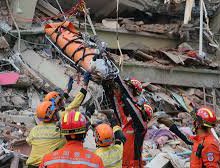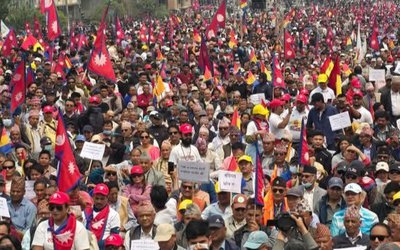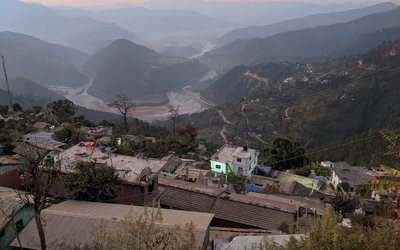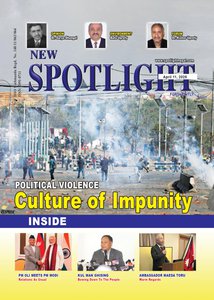
Natural disasters like earthquakes starkly remind us of nature’s immense power, shared vulnerability, and collective strength. The devastating earthquake that struck Nepal in 2015 and the recent 7.7 magnitude quake in Myanmar on March 28, 2025, resulted in significant human and material losses. These tragic events offer critical insights into disaster response and recovery efforts. With their deep-rooted cultural and historical ties, Nepal and Myanmar present valuable lessons in resilience-building and improving future disaster preparedness. This article distills those lessons into two categories: What to Do and What Not to Do offering a practical and compassionate roadmap for more effective disaster response.
What to Do
- Empower Local Communities and First Responders
In Nepal and Myanmar, local communities serve as the first line of defense in the aftermath of earthquakes, providing immediate assistance to affected individuals. Their intimate knowledge of the terrain and local customs enables them to deliver aid effectively. Supporting and training these local responders enhances the overall disaster response capacity, ensuring that aid reaches those in need promptly. For instance, in Nepal, youth groups and community-based organizations played a pivotal role in search and rescue operations, demonstrating the effectiveness of local engagement.
- Utilize community-based mapping and technology
Nepal's Kathmandu Living Labs effectively employed open-source mapping tools like OpenStreetMap to create real-time maps of affected areas. This initiative enabled humanitarian agencies to identify and reach remote communities more efficiently. By integrating local knowledge with digital tools, the Labs facilitated targeted aid delivery and improved coordination among responders. Implementing similar community-driven mapping initiatives in Myanmar can enhance situational awareness and resource allocation during disaster response.
- Implement cash-based assistance programs
Cash assistance empowers survivors to address their immediate needs and supports local economies. In Nepal, cash-for-work programs engaged local laborers in debris removal and infrastructure repair, providing financial support and fostering community participation in recovery efforts. Similarly, in Myanmar, cash assistance programs enable affected individuals to prioritize their requirements and contribute to the revitalization of local markets. By injecting funds into local economies, these programs stimulate market activity, ensuring that essential goods and services remain accessible to all.
- Adopt owner-driven reconstruction with technical support
In Nepal, the reconstruction strategy empowered homeowners to rebuild their houses with financial assistance and technical guidance. This approach not only accelerated the rebuilding process but also ensured that structures met safety standards. Training local masons and builders in earthquake-resistant construction techniques further strengthened community resilience. Encouraging owner-driven reconstruction in Myanmar, complemented by technical training programs, can promote safer building practices and community ownership of recovery efforts.
- Implement transparent and data-driven aid distribution
Nepal's experience highlighted the importance of using data to guide aid distribution, minimizing the influence of nepotism, and ensuring that assistance reached the most affected populations. Tools like interactive maps and needs assessments were instrumental in identifying priority areas for intervention. Leveraging data analytics and transparent criteria for aid allocation in Myanmar can enhance equity and effectiveness in disaster response.
- Ensure coordination among stakeholders
Effective coordination between government bodies, NGOs, and international agencies is crucial for a cohesive response. In Nepal, the National Reconstruction Authority led reconstruction efforts, facilitating efficient resource allocation and rebuilding processes. In Myanmar, collaborative efforts among various stakeholders are essential in streamlining aid distribution and avoiding duplication of efforts, ensuring that resources are utilized efficiently and effectively.
What Not to Do
- Avoid centralized control that delays aid
Excessive centralization can hinder timely aid delivery. In Nepal, delays in appointing leadership for the National Reconstruction Authority impeded relief efforts. In Myanmar, it's essential to ensure that aid distribution mechanisms are flexible and responsive to the needs of affected communities to avoid similar delays, enabling a swift and effective response to emergencies.
- Do not overlook the importance of communication
Effective communication infrastructure is vital during disasters. In Nepal, the lack of timely information flow impeded relief efforts. In Myanmar, ensuring robust communication systems can facilitate accurate and timely information dissemination, aiding in efficient disaster response and ensuring that communities receive the support they need without unnecessary delays.
- Refrain from restricting access to affected areas
Limiting access for humanitarian organizations and frontline workers can impede relief and recovery efforts. In Nepal, facilitating entry and movement for aid workers ensured timely assistance to affected populations. In Myanmar, maintaining open access for humanitarian organizations and frontline workersis crucial to delivering essential services effectively, ensuring that aid reaches those who need it most without hindrance.
Conclusion
The experiences of Nepal and Myanmar highlight the importance of community engagement, adaptable aid mechanisms, and well-coordinated efforts in disaster response and recovery. Integrating these lessons into preparedness and response strategies can significantly enhance resilience and ensure more effective support for communities affected by natural disasters. Equally vital is fostering international collaboration and support to strengthen disaster management systems, particularly crucial for Myanmar at this critical moment.
Dr. Prabin Manandhar is an international development expert with experience across Asia, the Middle East, and Africa. He is the Country Director of Helvetas Myanmar, former Chair of the Association of International NGOs (AIN) Nepal, and former Convenor of ACT Alliance in Nepal and Iraq. He also teaches at Kathmandu University. The opinions expressed are his own. Contact: prabin.manandhar11@gmail.com
- World Humanitarian Day 2024: Committing to Peace and Accountability
- Aug 19, 2024
- Nepal Investment Summit: Unlocking Economic Potentials For Growth And Development
- Apr 28, 2024
- Investing In Women: Accelerating Progress
- Mar 10, 2024
- Embracing The 'Empty Chair: Advancing Global Inclusivity And Equitable Development
- Dec 29, 2023
- Mental Health In Youth
- Jul 16, 2023













